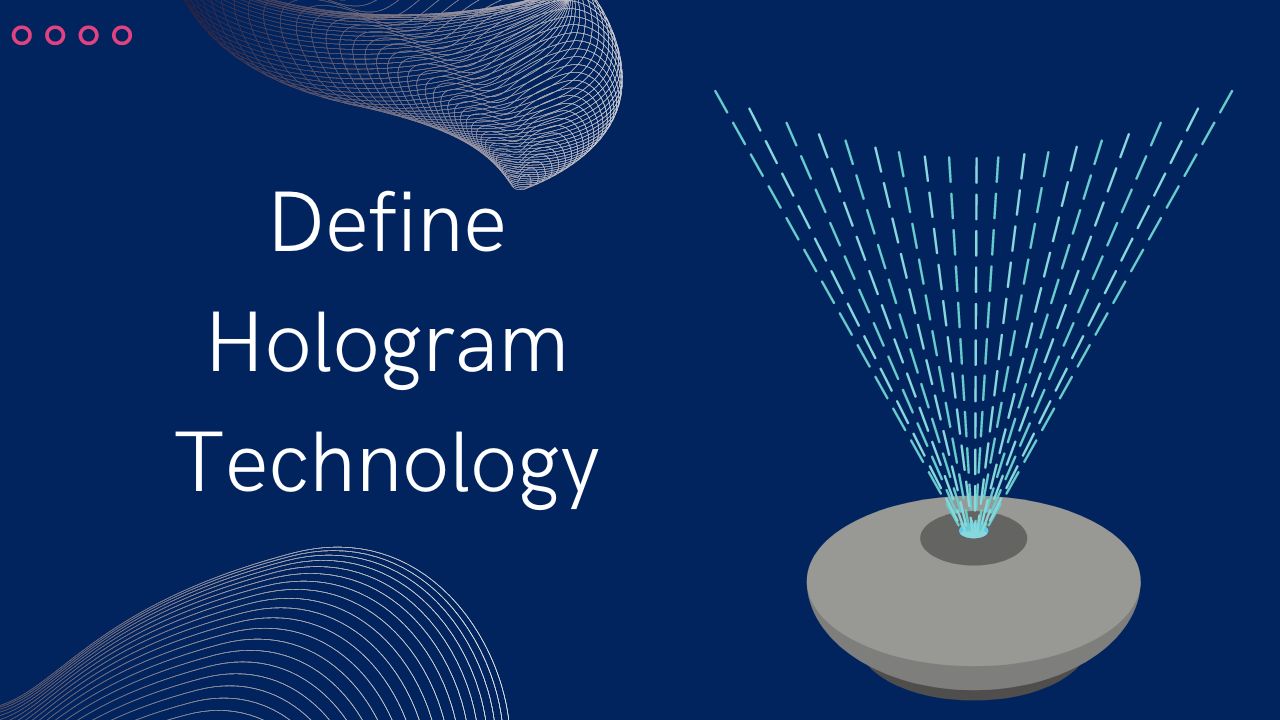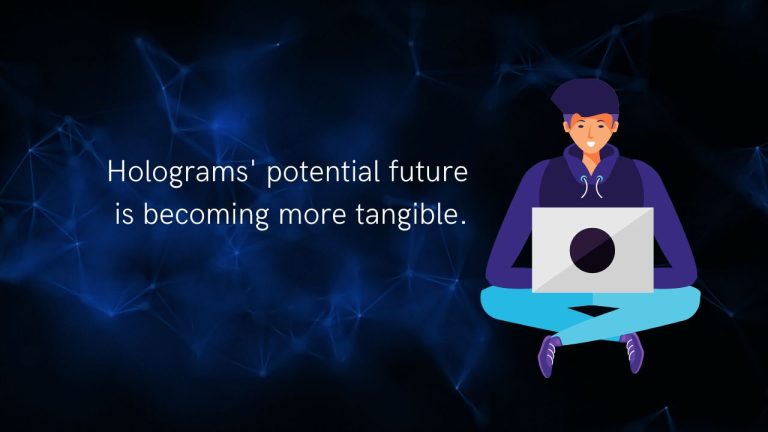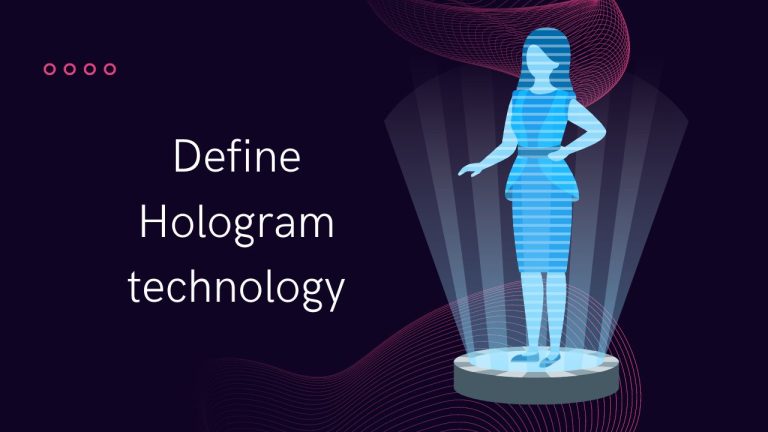Different Hologram Types
Introduction:
A hologram is a two- or three-dimensional recording of the interference pattern formed when light from an object at the same fixed wavelength collides with a point source of light (the reference beam) (the object beam). The diffraction pattern reproduces the wavefronts of light from the original object when the hologram is lit only by the reference beam. The result is an image that the spectator cannot tell apart from the original object.
Holograms come in a variety of shapes and sizes, and they can be categorized in numerous ways. They fall into two categories for our purposes:
- Reflection holograms
- Transmission holograms.
Hologram Reflection
A fully three-dimensional image can be viewed near the surface of the reflection hologram, which is the most common type of hologram presented in galleries. The hologram’s viewer side is illuminated by a “spot” of white incandescent light kept at a specific angle and distance. The light that the hologram has reflected serves as the basis for the image. These holograms have recently been created and color-displayed, making the visuals optically identical to the genuine objects. If the object is a mirror, the holographic representation of the mirror will reflect white light; if the object is a diamond, the holographic representation of the diamond will appear to “sparkle.”
Even though mass-produced holograms, like the eagle on the VISA card, can be seen when light reflects off of them, they are essentially transmission holograms that have been “mirrored” by an aluminum layer.
Hologram of the transmission
The transmission hologram is often viewed with the same kind of laser light that was used to produce the recording. The image is conveyed to the observer’s side by this light, which is aimed from behind the hologram. The virtual image may be extremely detailed and sharp. For instance, a full-size room with people inside of it can be seen via a small hologram as if the hologram were a window. One can still see the complete scene through each piece of this hologram even if it is broken into small pieces (to reduce waste, the hologram can be covered by a sheet of paper with a hole in it).
The piece (hole) is observed from various angles, depending on its placement. Additionally, by passing an undiverted laser beam through the hologram and aiming it in the opposite direction of the reference beam, it is possible to project a real image onto a screen that is placed where the object was when it was first placed.
Fusion Hologram
Numerous modifications can be made between the reflection and transmission types of holograms.
Holograms with an embossed appearance
A two-dimensional interference pattern is imprinted onto thin plastic foils to create holograms in bulk for authenticity applications like security hologram stickers or the holograms you see on credit cards, money, and passports. A photosensitive substance known as photoresist is often where the original hologram is stored. Grooves are visible on the surface of the hologram after it has been created. On this hologram, a nickel layer is applied, peeled off, and a metallic “shim” is left behind. From the initial one, several secondary shims can be made. On a roller, the shim is put. The hologram is pressed (embossed) onto a roll of a composite material like Mylar under extreme heat and pressure. Holograms that have been embossed are truly a variety of holograms.
Intuitive holograms
An object, such as a live person, an outdoor scene, a computer graphic, or an X-ray image, can be captured in a series of photos (often transparencies) to create a transmission or reflection hologram. The object is typically “scanned” by a camera, which records many distinct perspectives. Each view is displayed on a laser-lit LCD screen that serves as the object beam for creating a hologram on a few vertical strips of the holographic plate (holo plate).
In a nearby strip, the following view is similarly captured, and so on until all the views are captured. The resulting composite hologram displays images from many thin holograms to the left and right eyes, creating a stereoscopic image. Nowadays, the original recording has been done with video cameras, allowing for the use of computer software to modify the images.
Interferometry using holographic data
By taking two exposures of a moving object, microscopic changes can be quantitatively assessed. Fringes that show the vector displacement can be observed on the object as a result of the interference between the two images. The virtual representation of the object and the real thing are directly compared in real-time holographic interferometry. Heat or shock waves, which are normally unseen, can be made visible. This area of photometry has a vast number of engineering applications.
holograms with several channels.
On the same hologram, completely new scenes can be seen by adjusting the angle of the viewing light. Massive computer memories have a tonne of promise with this idea.
Holograms created by computers
Holography’s mathematics is now well understood. Holography essentially consists of three components: a light source, a hologram, and an image. The third element can be calculated if any two of the other two are known in advance. For instance, we can determine the diffraction pattern if we have a parallel beam of light with a known wavelength and a “double-slit” system (a straightforward “hologram”). Also, we may determine the wavelength of the light by using the diffraction pattern and the specifics of the double-slit system. As a result, we are free to imagine any pattern.
The hologram can be created by a computer when we choose the wavelength we’ll observe with. This CGH (computer-generated holography) has developed into a rapidly expanding sub-branch. For instance, CGH is used to create holographic optical elements (HOE), which are utilized in various optical devices like a standard CD player to scan, split, focus, and generally manipulate laser light.
FAQS:
What kind of technology does a hologram use?
By capturing numerous interference patterns with different wavelengths, a color hologram is produced. Then, holographic projectors employ lasers. Without the need for several projectors or mechanical processing, electro-holography can project 3D images from the air.
What is the fundamental idea behind a hologram?
Holography is a method that enables a light field to be recorded and later rebuilt when the original light field is no longer there because the original items have vanished. A light field is often the result of a light source being scattered off things.




